Past Preserved: Photos of the Petrified Forest

Petrified Wood

Petrified wood is a fossil that is the remains of ancient vegetation, most commonly ancient trees. It occurs by a natural action known as permineralization, a process in which mineral deposits take on the shape within the cells of organic tissue. These minerals replace all the organic materials of the ancient trees, most commonly with a silicate such as quartz.
3-D Fossils

Petrified wood is a 3-D fossil representation of the original living organism. The petrification process occurs deep underground where the wood has become buried by sediments, blocking off any source of oxygen and thus stopping the oxygen-fueled decomposition or the organic matter. Petrification requires four basic materials: water, wood, mud and volcanic ash.
Petrified Forest National Park
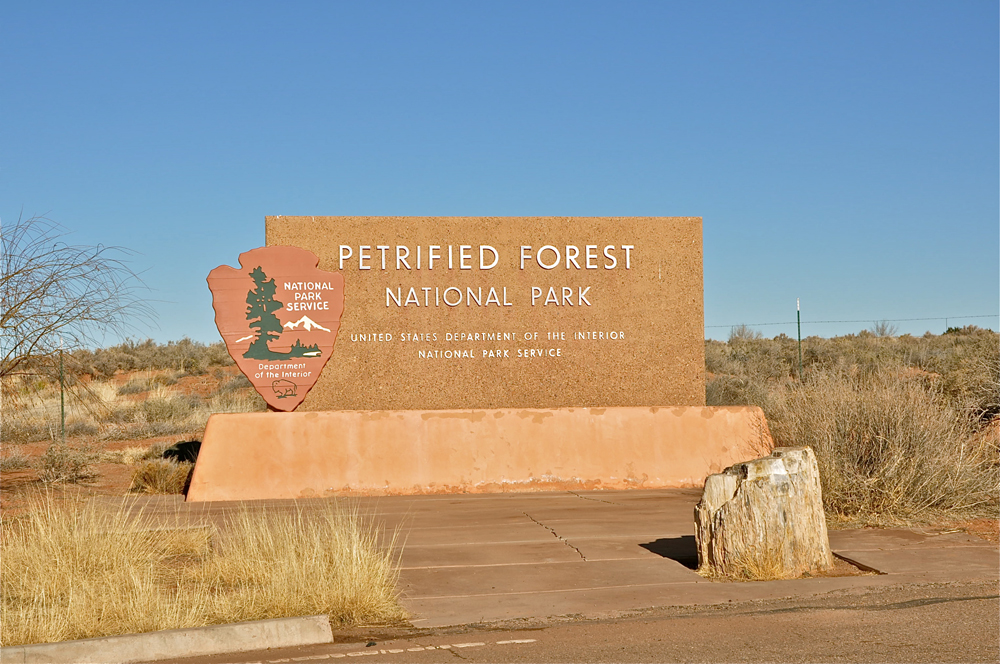
Petrified wood is found in all 50 states of the United States as well as many countries around the world. In northeastern Arizona, one of the world's greatest concentrations of petrified wood has risen to the surface as a result of thousands of years of plateau uplifting and erosion. This great collection of petrified wood is protected within the boundaries of the Petrified Forest National Park.
Foundations Laid
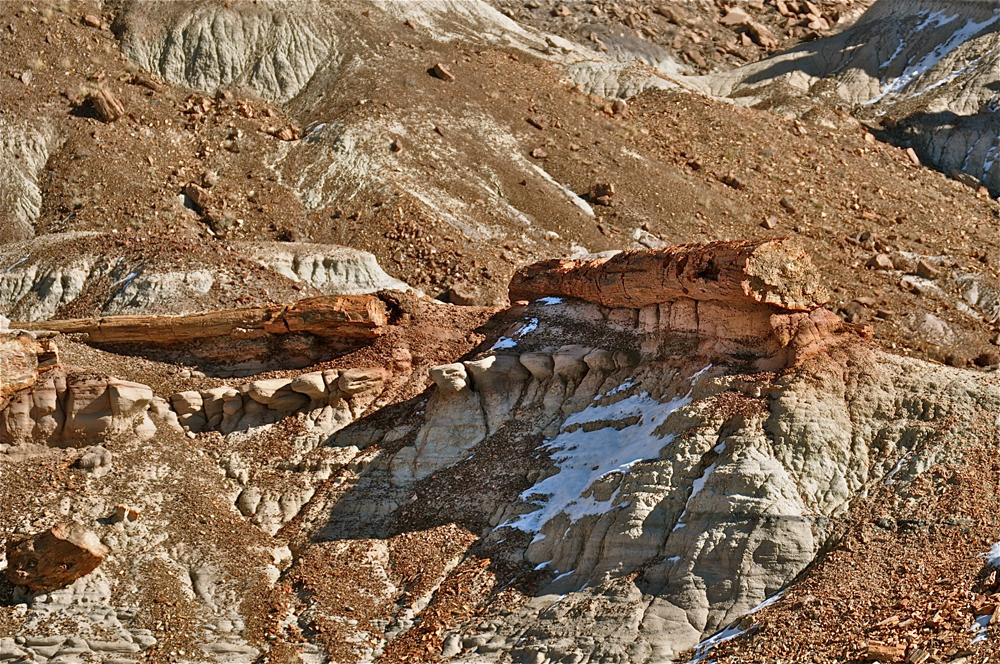
The story of this land that is now within the national park boundary begins some 226 million years ago during the Late Triassic Period when the Chinle Formation found here was laid down. Sedimentary rocks such as sandstone, siltstone, and mudstone, are most common here and buried deep within these sedimentary layers are found the petrified remains of ancient forestsa.
Pangaea - Supercontinent
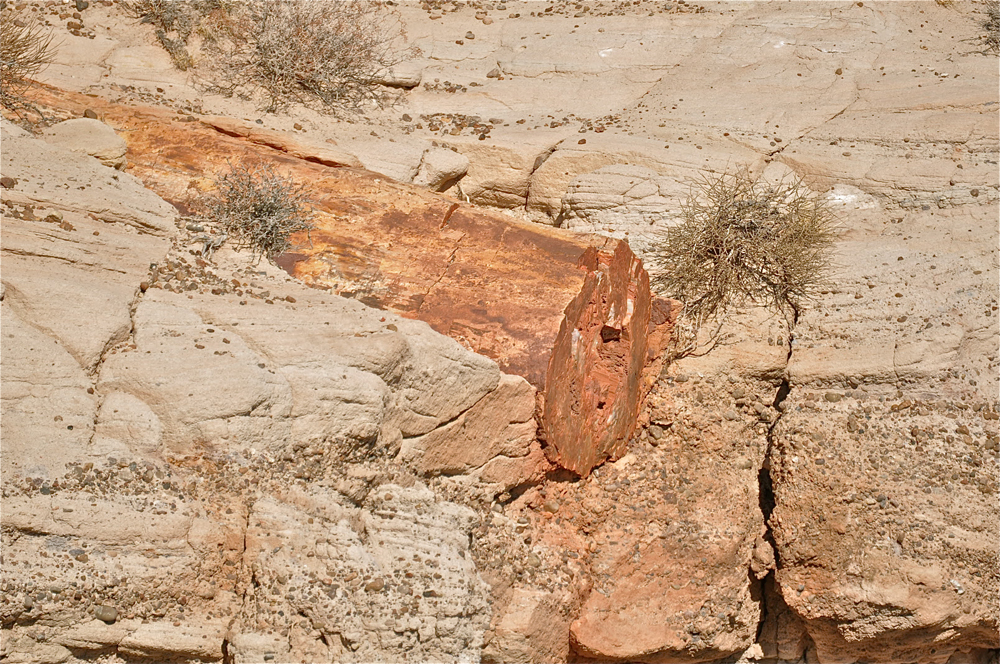
When all the Earth's land was once joined together into the supercontinent called Pangaea, this land of northern Arizona was located only a few degrees north of the Earth's equator, on the southwest shores of Pangaea. The climate was tropical and a great, sediment-filled river system, maybe as large as today's Amazon or Mississippi Rivers, constantly flowed toward the ancient sea.
Thick Sedimentary Rock Layers

Common flooding spread the continental sediment across great flood plains, laying down thick layers of sedimentary rock along with the remains of animals and plants, including great trees. The petrified remains of those trees are scattered today across the national park's landscape.
Discovered Species
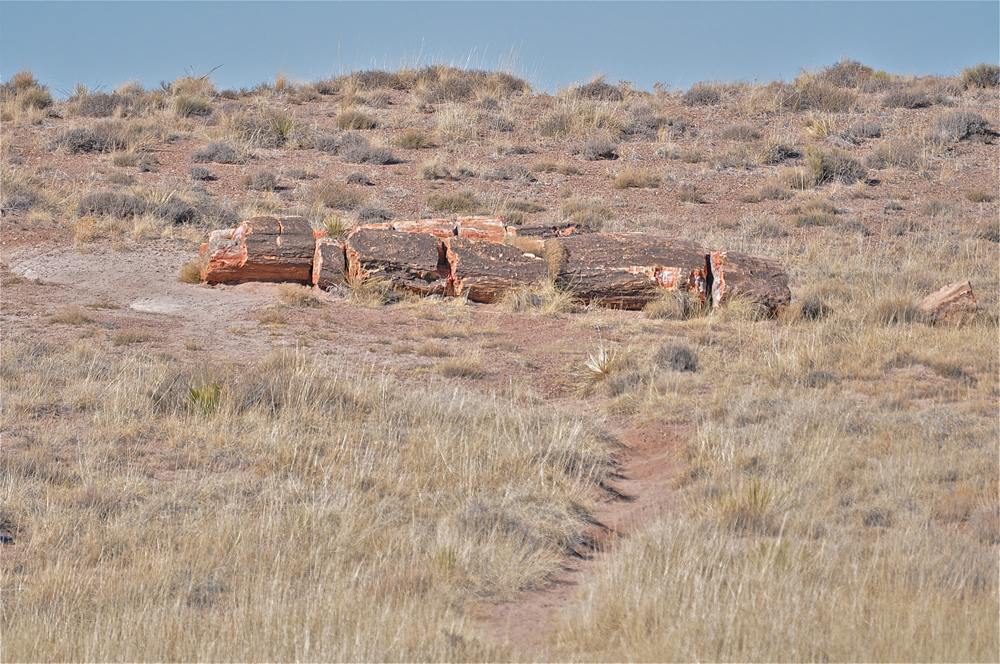
Over 200 species of plants have been discovered within this Chinle Formation, including lycopods, ferns, horsetails, cycads, conifers and several types yet to be classified. Most of the petrified wood found here is from an extinct conifer given the scientific name Araucarioxylon arizonicum. Modern botanists are still not in agreement that all these ancient logs are of the same species and study into the variety of petrified trees is ongoing.
Get the world’s most fascinating discoveries delivered straight to your inbox.
Submerged Trees Begin to Petrify
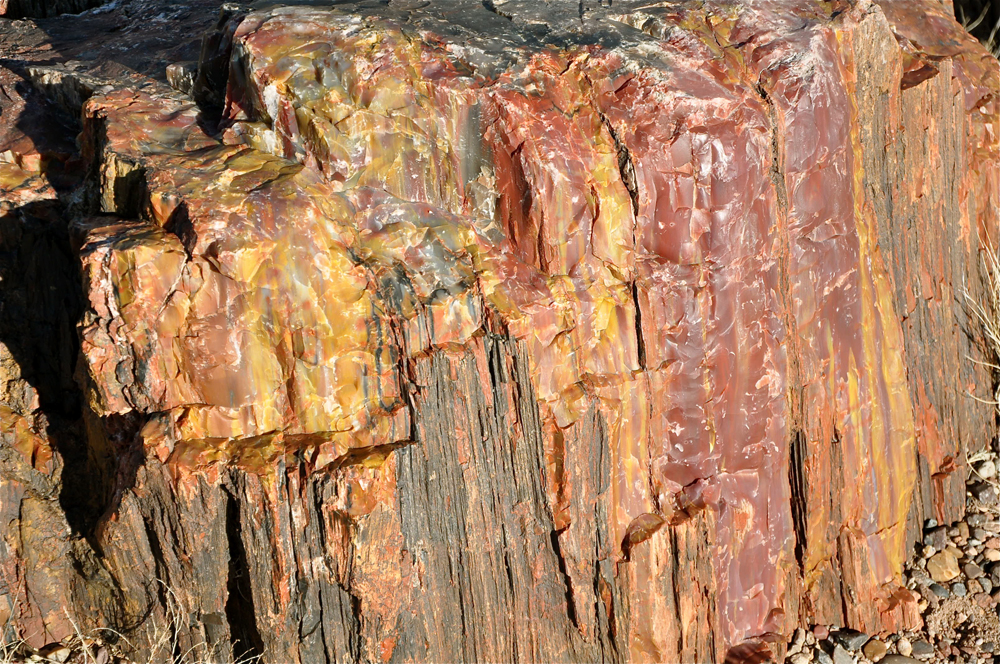
Submerged deep beneath the sediments of silt, mud, sand and volcanic ash deposited by the ancient rivers, the buried forest of trees remained for millions of years. Percolating ground water carried silica and other trace minerals downward, saturating the deeply buried ancient trees. Slowly, quartz crystals grew within the porous cell walls and the slow process of petrification began.
Giant Quartz Crystals
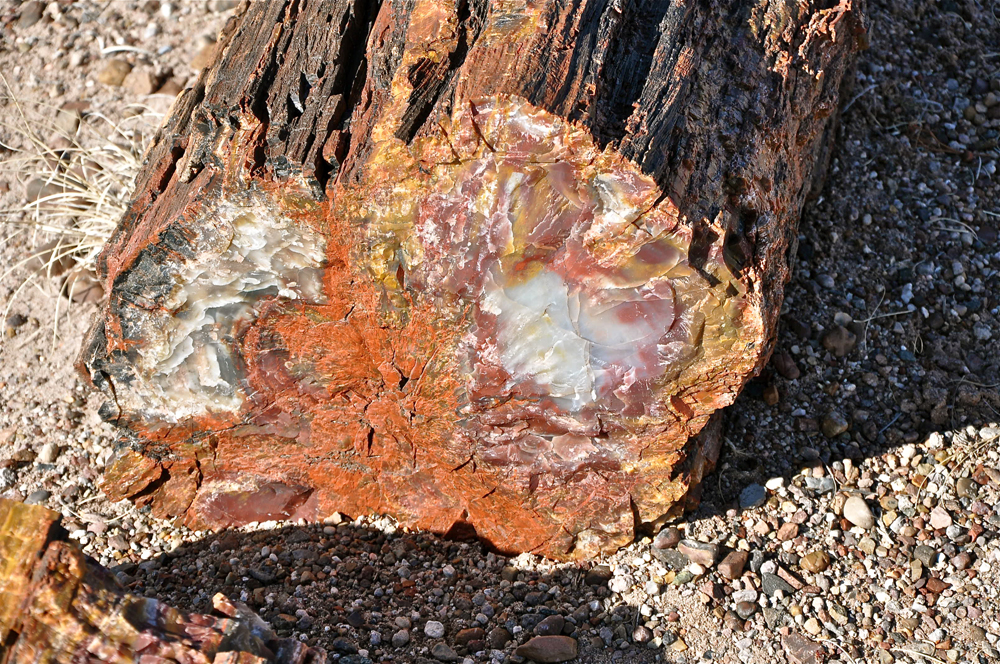
Petrified wood is basically a giant quartz crystal. Quartz crystals tend to be clear in color and yet petrified wood can be all the colors of the rainbow. These brilliant colors are due to impurities found in the quartz. For example, if iron oxide is present, the petrified wood will be red, brown and yellow. Cobalt results in hues of green and blue. Manganese creates shades of pink, while carbon creates streaks of black.
Natural Sectioning
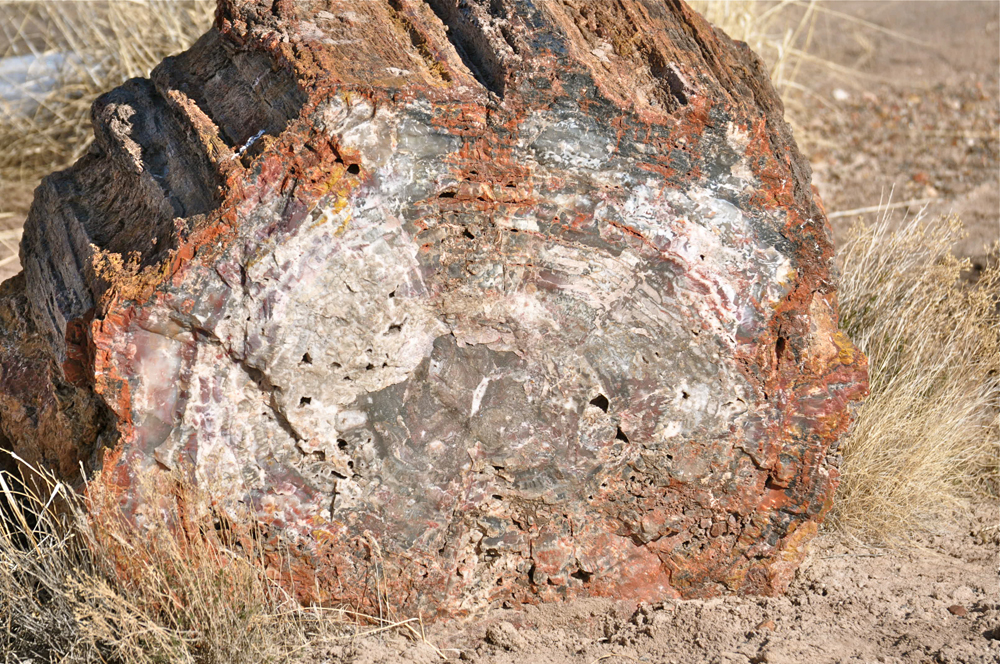
Since quartz is very hard, yet very brittle, the Petrified Forest often looks as if ancient lumberjacks had come through the forest cutting the large logs into smaller sections. In fact, this fracturing is a result of the natural breaking of the logs from ground stress as the Colorado Plateau began to rise some 60 million years ago.
Rising Plateaus
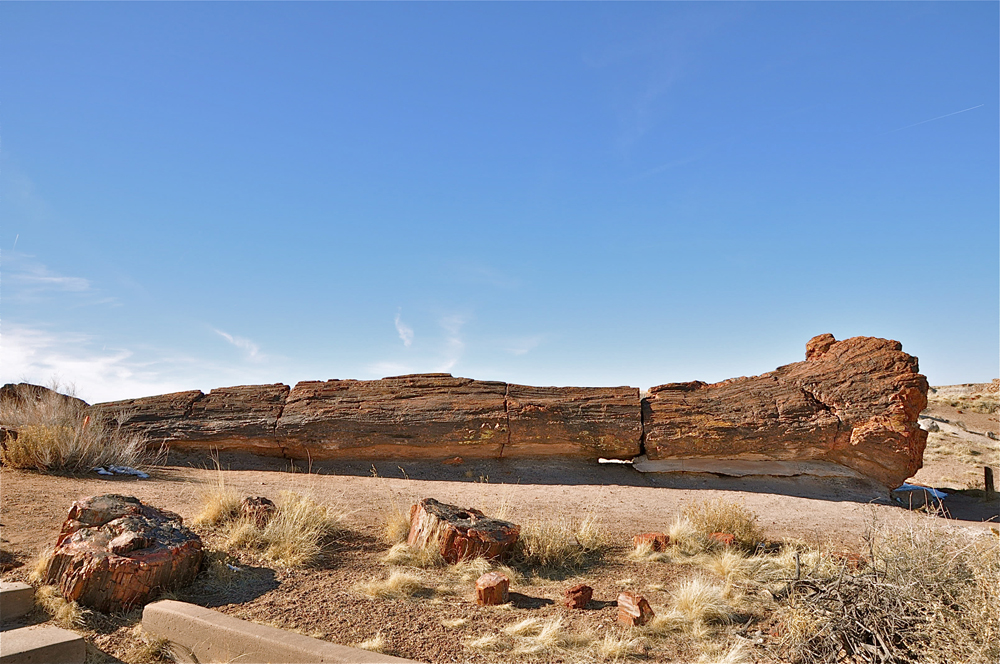
While Colorado Plateau slowly rose, the forces of erosion and weathering removed the softer sedimentary layers leaving exposed an incredible forest of petrified logs scattered across the current high desert landscape. Some of these petrified logs are over 100 feet (30.5 meters) long, 10 feet (3 m) in diameter and weigh up to 44 tons.



